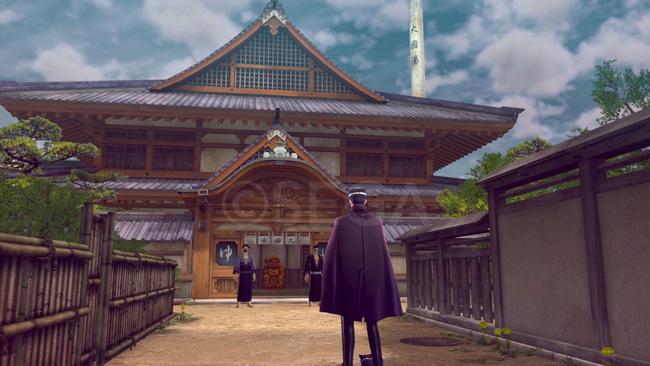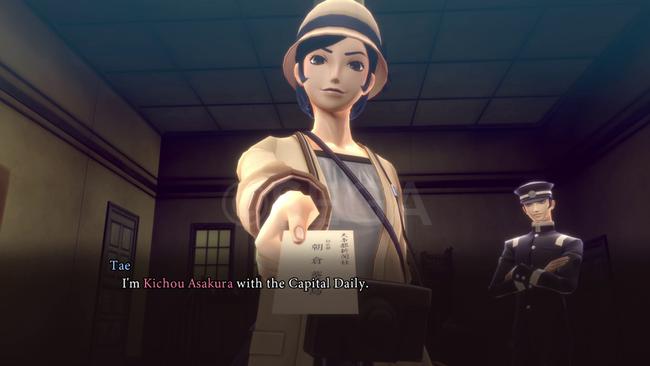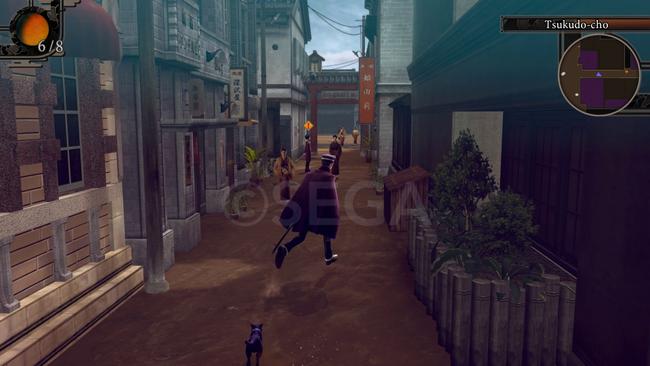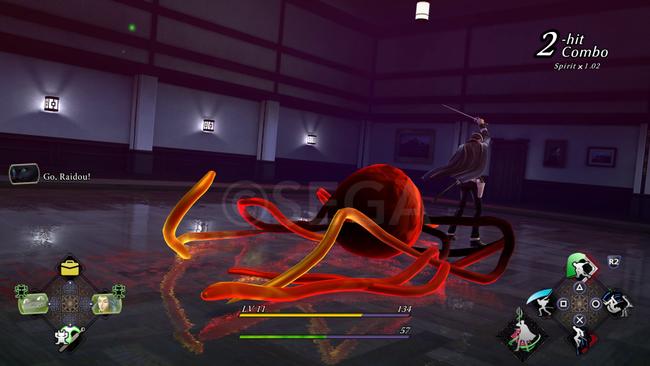
Hands-on with Raidou Remastered: A Cold Case Re-opened
Last week, RPG Site was given the opportunity to try Raidou Remastered: The Mystery of the Soulless Army, Atlus’ latest revisit to their PS2 catalogue. While they’re literally calling this a remaster in its title, my takeaway is that this feels much more akin to a remake. The distinction between both terms has been heavily blurred in recent years, but what is important is how much of a revamp this is compared to other HD remasters they’ve put out. This is not a cleaned-up PS2 game like Shin Megami Tensei III Nocturne HD Remaster, but instead a ground-up recreation of the original Devil Summoner: Raidou Kuzunoha vs. the Soulless Army.
I was given access to a pre-release build of the Steam version of the game, starting from the prologue and continuing until the end of Chapter 2. If you'd like to know more about the technical aspects of the game on Steam Deck, check out Mikhail's impressions piece here. I was given free rein to play around with the systems and explore in the game’s opening areas, but I couldn’t proceed past this designated point. I did most, if not all, of the side content available for both of these chapters, with my total playtime reaching around seven hours. I also took the chance to revisit the opening hours of the original PS2 version of the game, which I hadn’t played since I first started getting into this series in the early 2010s.

The idea of a “faithful” remake seems contradictory, but from what I’ve seen, this is playing things pretty close to the original experience. Events played out close to the original, with minor script additions to work around the new systems introduced. You’ll still go to the same spots, do the same things, fight the same goons in bathhouses. The new voice acting is also a welcome inclusion, and I found the English cast particularly charming. I’m unsure how things will play out in the full version, but Raidou Remastered seems committed to remaking the exact events of the original game.
The details between those events have been completely changed, however, making Raidou Remastered feel like a brand new game wearing the clothes of the original. After finishing the allotted preview content, I spent about an extra hour thoroughly noting all the small mechanical differences between the original version and the re-release. I don’t think I even caught them all, but it’s fascinating how what I played still felt authentically “Raidou”. The “remaster” blends systems from the original “Soulless Army” as well as the “King Abaddon” sequel, while also giving it a modern makeover, which leaves me with something unlike any Atlus re-release I’ve ever played.

In both chapters I played, Raidou and his talking cat Gouto go around solving supernatural mysteries in Taishō Era Tokyo. Raidou is a Devil Summoner, and he can use the demons you capture in battles to help solve cases. Certain NPCs can have their mind read, their spirits ignited, or temper cooled down depending on the style of demon you have summoned. In the remaster, if you have the correct type of demon in your arsenal that coincides with the action for that NPC, the game will automatically summon it. Kept intact is the ability to send your Demon out on a Solo Investigation, crucial for ADV-inspired puzzle-solving. Getting a flying demon to go fetch me a boat stuck at the end of a river got a big grin out of me.
In the PS2 version, map screens were represented by pre-rendered backgrounds with set camera angles. Think classic survival horror, like the original Resident Evil trilogy. The team working on this remaster has remade every map screen in full 3D, with a stunning attention to detail. While the general lighting has been changed, with more of an emphasis on purple hues over green, the new 3D presentation manages to strongly evoke the PS2 original. I’m not sure how intentional this was, but the way they shade the buildings had me thinking they were deliberately trying to recreate the look of old pre-rendered 3D, but cleaned up. I spent a good chunk of my available time simply hanging out on the streets of Tsukudo-cho and appreciating the scenery. This has been made easier by the removal of random encounters, which triggered rather often in the real world before.

The combat is where things have really been expanded, as there’s practically nothing from the original game’s battle system left in Remastered. They’ve overhauled everything to make it much closer to Devil Summoner 2: Raidou Kuzunoha vs. King Abaddon. Instead of having one attack button and a gun with elemental bullets, Raidou Remastered has light and heavy attacks, with the former used to restore your MAG meter. Your summoned demons need this to attack in battle, so you’ll need to maintain pressure with these weaker attacks so your demons can have a steady pool of MAG to stay useful in battle. Fights are faster than ever, but still plenty dangerous.
Your gun still has a use, allowing you to fire off a barrage of bullets at demons to stun them in place. This seems largely crucial for small and fast-moving demons, like Pixies, who might move too fast to catch with normal attacks. The elemental aspect of this weapon has been replaced by special skills running on cool downs, and these skills are mapped to your face buttons once you hold in the right trigger. Later on in Chapter 2, you can utilize the Sword Alchemy mechanic from the Goumaden, and even craft your sword into a weapon tree to turn your heavy attacks into either a Spear or an Axe. Included with some of these are new special moves, and I’m really curious how flexible Raidou’s elemental damage capabilities will be by the end.

Mixing up elegant and flashy-looking normal combos with blocks, dodges, and special attacks elevates the flow of Raidou 1’s battles to a modern standard. I’m genuinely impressed with how smooth it comes together, considering this isn’t a style of game Atlus has dabbled in recently. Metaphor had a simple action system to initiate turn-based combat, but this aims to be closer to a prestige action game. Raidou’s sword slashes carry him all around the arena with ease, making it easy to position yourself where you need to be at all times. Abilities like Devil’s Bane, often popping up as a reward for a perfect dodge or to finish off a demon, and a special meter attack called Spirit Slash thoroughly expand your kit out to meet modern standards. You even have an extremely satisfying move to dodge out of harm's way and back around an enemy. The game feels leaps and bounds above what I could have ever dreamed.
What I think makes this stand out among your normal Action games, and keeps it in line with the Megami Tensei series it exists in, is demon summoning. I found myself keeping one demon for healing/support and one to focus on attacking, but regularly cycled them out depending on my needs. My immediate worry when seeing how capable Raidou has become was feeling like the game would be too easy, but I think the shift to an ever-draining resource of MAG kept my attention balanced between multiple different aspects of combat at once. This is ideal for me when it comes to action games, and it feels even better during boss battles, which now feel like they’re borrowing from MMO design.

Raidou can pull his demons back to give them invincibility during unblockable attacks with the Safeguarding mechanic. This is a useful system to keep them from harm, with the obvious trade-off that they won’t be participating in battle. Their participation is always crucial in combat, but more so during boss encounters, thanks to elemental spells weakening boss shields faster. You have no idea how happy I was to struggle during the game’s first boss. Dodging and jumping over AOE attacks is exhilarating, and it gave me hope that future boss fights would be even more demanding. I’d need to carefully choose when my demons would need to be out to keep steady amounts of DPS to whittle down the boss's health, but they would quickly die if left out during aggro phases. It took me four attempts, and each time I felt like I was learning just a little bit more about how battles were meant to play out.
With no more random encounters in the game and the addition of objective markers, progress has been streamlined quite a bit. I spent less time overall in the first two cases this time around, but I doubt that’ll necessarily be seen as a negative for anyone looking for a lean RPG. Random encounters have been replaced by Aril Rifts, spots on the map in the real world where you can battle unique encounters. While the sicko in me missed random encounters, I can understand why they were removed. Raidou’s battle system has gotten such a facelift that it feels more in line with a prestige action game, and constant battles might grow stale over time. The combat encounters in these rifts are well designed, rewarding you 4X experience and 8X money than normal field battles in dungeon areas. Demons are out in the open in dungeons, and you’re able to strike them to gain initiative. I’d say the only awkward part of this process is the character art of Raidou and Gouto sliding across the screen to transition into fights.

I am a bit disappointed that there is seemingly no way to turn off objective markers. I have no issue whatsoever with them being in the game as an option, since the original game could feel rather obtuse at times. However, more than any classic Atlus game, figuring out the way forward feels intentionally part of the game design. Raidou is a detective, and he needs to roam the streets to find clues to help him make progress in his cases. In the first case, for example, as soon as you get the premise, you are set loose in Tsukudo-cho and told to ask around to find a missing girl named Kaya. In the original game, there are a handful of NPCs to interact with, all eventually pushing you in the direction of a manor to the north. This will eventually lead you back to town, allowing you to intuit that you need to ask some girls in the same uniform as Kaya for information by showing them a photo you got in the manor.
In the Remaster, you are given an objective marker of every plot-critical NPC to talk to. I’m glad these are here for new players, because back in the day, I sometimes consulted a guide to help me make progress. The original’s unique mixture of ADV progression and ARPG battles is what makes it so memorable, so always being told exactly where to go was rather deflating. You can turn off Auto Save in the system settings, so I hope the dev team considers allowing the option for players to turn off objective markers if they want to do the detective work themselves. The developers have painstakingly recreated this beautiful setting in full 3D, and I want to immerse myself in the role of a young detective as much as I can.
Outside of that main gripe, I’m left pretty pleased with how Raidou Remastered is shaping up. This style of “Remaster” is a pretty unique approach for the company, and my gripes don’t detract too heavily from all the parts I’m impressed by. I’d love to see them revisit an Atlus game where they don’t feel the need to make such big overhauls to the battle system, like perhaps the Digital Devil Saga games. Hell, make a prestige “Remaster” of the original Devil Summoner! This is a fascinating lens to view old RPGs with, and I’m eager to see how the full version sticks the landing. Mechanically, in all but name, this is what I imagined a Raidou 3 could be.